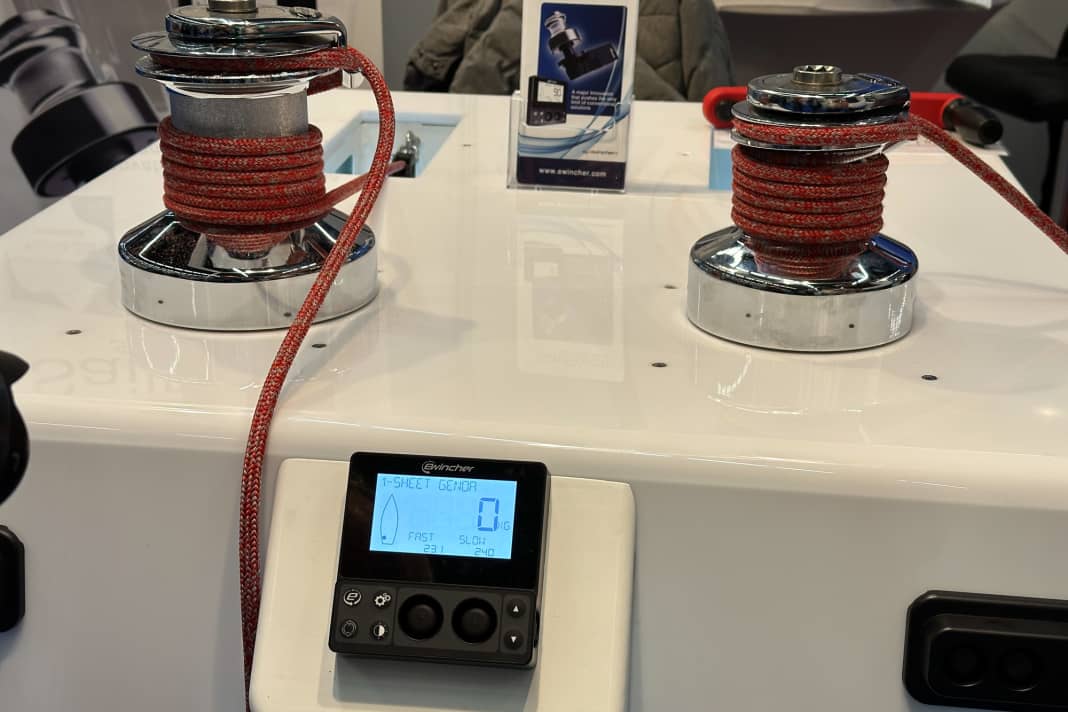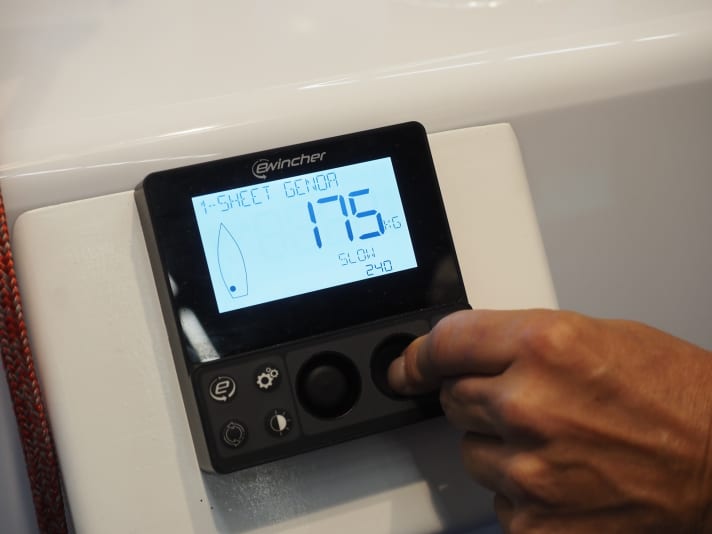Ewincher Sailforce: Small drive, big performance - the electric winch of the future






The Sailforce electric winch system is based on the same technology as the Ewincher system. Electric cranks. However, the brushless motors are around twice as powerful with an output of one kilowatt. The joke here is that the technology does not work with 12 volts, but with 30 volts and is powered by a small lithium battery. The high voltage keeps the currents low. According to the manufacturer, a maximum of 45 amps should flow, so no thick cables are required. An integrated battery-to-battery charger continuously recharges the buffer battery from the on-board power supply between uses. A maximum of six amps flows, which is why thin cables are also sufficient.
Centralised operation of the electric winch from the control stand
The Sailforce system not only offers high performance, but also centralised operation. Up to six electric winches can be controlled via the control display, making it easy to operate from the helm. The current load of each winch can be read off. Individual limits can also be programmed to stop the winch automatically. For example, if a kink has formed in the sheet or halyard and it is stuck in a deflector. The adjustable load limiters are also practical when setting sails. They can be programmed individually for each winch and each gear and can even be grouped in different scenarios so that different limits are effective for reefing or setting than for hauling a sheet.

The system also has infinitely variable speed control. The speed of the winches can be regulated by pressing the control buttons on the control unit in different ways.
Availability and prices of the new winch from Ewincher
Sailforce is due to go on sale in March. At the start, however, it will only be available as a complete package consisting of at least one two-speed winch from Hutton, the drive with buffer battery and the central unit. The smallest version works with a 40 winch and costs 3,484 euros. The range extends all the way up to the impressive 70 models, also from the Australian manufacturer Hutton. Work is also underway on variants that are compatible with winches from other manufacturers.
